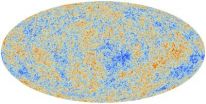(Press-News.org) Seventy-five percent of the world's population consumes nearly twice the daily recommended amount of sodium (salt), according to research presented at the American Heart Association's Nutrition, Physical Activity and Metabolism and Cardiovascular Disease Epidemiology and Prevention 2013 Scientific Sessions.
Global sodium intake from commercially prepared food, table salt, salt and soy sauce added during cooking averaged nearly 4,000 mg a day in 2010.
The World Health Organization recommends limiting sodium to less than 2,000 mg a day and the American Heart Association recommends limiting sodium to less than 1,500 mg a day.
"This study is the first time that information about sodium intake by country, age and gender is available," said Saman Fahimi, M.D., M.Phil., lead author and a visiting scientist in the Harvard School of Public Health's epidemiology department in Boston, Mass. "We hope our findings will influence national governments to develop public health interventions to lower sodium."
Cardiovascular disease is the number one cause of death in the world; excess sodium intake raises blood pressure. High blood pressure is one of the major contributors to the development of cardiovascular disease.
Among women and men, average sodium intake exceeded healthy levels in almost all countries, researchers said. Kazakhstan had the highest average intake at 6,000 mg per day, followed by Mauritius and Uzbekistan at just less than 6,000 mg per day.
Kenya and Malawi had the lowest average intake at about 2,000 mg per day. In the US, the average intake was about 3,600 mg a day.
One hundred eighty-one of 187 countries, representing 99 percent of the world's population, exceeded the World Health Organization's recommended sodium intake of less than 2,000 mg a day; and 119 countries, representing 88 percent of the world's population, exceeded this recommended intake by more than 1,000 mg a day. All countries except Kenya exceeded the American Heart Association recommended sodium intake of less than 1,500 mg a day.
The researchers analyzed 247 surveys of adult sodium intake to estimate sodium intake, stratified by age, gender, region and nation between 1990 and 2010 as part of the 2010 Global Burden of Diseases Study, which is an international collaborative study by 488 scientists from 303 institutions in 50 countries around the world. .
###
Co-authors are John Powles, F.F.P.H.; Paul Pharoah, M.D., Ph.D.; Majid Ezzati, Ph.D.; Stephen Lim, Ph.D.; Renata Micha, R.D., Ph.D.; Shahab Khatibzadeh, M.D., M.P.H.; and Dariush Mozaffarian, M.D., Dr.P.H. Author disclosures are on the manuscript.
The Bill and Melinda Gates Foundation funded the study.
Follow @HeartNews for EPI/NPAM media materials. For general meeting information, follow @AHAMeetings. Use the hashtag #EPINPAM13 for either account.
Statements and conclusions of study authors that are presented at American Heart Association scientific meetings are solely those of the study authors and do not necessarily reflect association policy or position. The association makes no representation or warranty as to their accuracy or reliability. The association receives funding primarily from individuals; foundations and corporations (including pharmaceutical, device manufacturers and other companies) also make donations and fund specific association programs and events. The association has strict policies to prevent these relationships from influencing science content. Revenues from pharmaceutical and device corporations are available at http://www.heart.org/corporatefunding.
NOTE This scientific presentation at the meeting is scheduled for Thurs., March 21, 9:15 a.m. CT/10:15 a.m. ET. ALL NEWS MATERIALS ARE EMBARGOED UNTIL THE TIME OF PRESENTATION OR 4 P.M. ET EACH DAY, WHICHEVER COMES FIRST.
Adults worldwide eat almost double daily AHA recommended amount of sodium
American Heart Association Meeting report
2013-03-21
ELSE PRESS RELEASES FROM THIS DATE:
Japanese researchers identify a protein linked to the exacerbation of COPD
2013-03-21
Researchers from the RIKEN Advanced Science Institute and Nippon Medical School in Japan have identified a protein likely to be involved in the exacerbation of chronic obstructive pulmonary disease (COPD). This protein, Siglec-14, could serve as a potential new target for the treatment of COPD exacerbation.
In a study published today in the journal Cellular and Molecular Life Sciences the researchers show that COPD patients who do not express Siglec-14, a glycan-recognition protein, are less susceptible to exacerbation compared with those who do.
COPD is a chronic ...
Scripps Research study underlines potential of new technology to diagnose disease
2013-03-21
JUPITER, FL – March 21, 2013 – Researchers at The Scripps Research Institute (TSRI) in Jupiter, FL, have developed cutting-edge technology that can successfully screen human blood for disease markers. This tool may hold the key to better diagnosing and understanding today's most pressing and puzzling health conditions, including autoimmune diseases.
"This study validates that the 'antigen surrogate' technology will indeed be a powerful tool for diagnostics," said Thomas Kodadek, PhD, a professor in the Departments of Chemistry and Cancer Biology and vice chairman of ...
BUSM researchers identify chemical compounds that halt virus replication
2013-03-21
(Boston) – Researchers at Boston University School of Medicine (BUSM) have identified a new chemical class of compounds that have the potential to block genetically diverse viruses from replicating. The findings, published in Chemistry & Biology, could allow for the development of broad-spectrum antiviral medications to treat a number of viruses, including the highly pathogenic Ebola and Marburg viruses.
Claire Marie Filone, PhD, postdoctoral researcher at BUSM and the United States Army Medical Research Institute of Infectious Diseases (USAMRIID), is the paper's first ...
ACMG releases report on incidental findings in clinical exome and genome sequencing
2013-03-21
The American College of Medical Genetics and Genomics (ACMG) released the widely-anticipated "ACMG Recommendations for Reporting of Incidental Findings in Clinical Exome and Genome Sequencing" report at its 2013 Annual Clinical Genetics Meeting today in Phoenix. The ACMG Annual Clinical Genetics Meeting is one of the largest gatherings of medical and health professionals in genetics in the world.
As exome and genome sequencing become more commonly used in medical care, doctors will increasingly be able to learn about genetic changes that increase an individual's risk ...
Can we treat a 'new' coronary heart disease risk factor?
2013-03-21
NEW YORK – Depressive symptoms after heart disease are associated with a markedly increased risk of death or another heart attack. However, less has been known about whether treating heart attack survivors for depressive symptoms could relieve these symptoms, be cost-effective, and ultimately, reduce medical risk? Columbia University Medical Center's Karina W. Davidson, PhD and her research team now report a patient-centered approach that answers these questions in the affirmative.
With a grant from the National Institutes of Health's National Heart, Lung, and Blood Institute ...
Exploring the link between traumatic brain injury and people who are homeless
2013-03-21
TORONTO, March 21, 2013—Homeless people and their health care providers need to know more about traumatic brain injuries to help prevent and treat such injuries, a new study has found.
Homeless people have a disproportionately higher risk for TBI compared to the general population, yet little is known about the severity of those injuries, who exactly is suffering from them and what the long-term consequences are.
"A better understanding of TBI, its presentation and characteristics in the homeless is vital in order to enable appropriate interventions, treatments, and ...
Dysfunction in cerebellar Calcium channel causes motor disorders and epilepsy
2013-03-21
A dysfunction of a certain Calcium channel, the so called P/Q-type channel, in neurons of the cerebellum is sufficient to cause different motor diseases as well as a special type of epilepsy. This is reported by the research team of Dr. Melanie Mark and Prof. Dr. Stefan Herlitze from the Ruhr-Universität Bochum. They investigated mice that lacked the ion channel of the P/Q-type in the modulatory input neurons of the cerebellum. "We expect that our results will contribute to the development of treatments for in particular children and young adults suffering from absence ...
Misregulated genes may have big autism role
2013-03-21
PROVIDENCE, R.I. [Brown University] — A new study finds that two genes individually associated with rare autism-related disorders are also jointly linked to more general forms of autism. The finding suggests a new genetic pathway to investigate in general autism research.
The genes encode the proteins NHE6 and NHE9, which are responsible for biochemical exchanges in the endosomes of cells. Mutations in the NHE6 gene are a direct cause of Christianson Syndrome, while mutations in the NHE9 gene lead to a severe form of autism with epilepsy. In the new study, a statistical ...
Planck's 'child' universe
2013-03-21
"We are very excited, we are finally seeing the concrete results of so many years of hard work". This is how the scientists of the Planck project have commented the first data resulting from the observations carried out by Planck. The mission of the ESA satellite is to observe the past of our Universe, going back in time and reaching the very first instant right after the Big Bang. The image that the Planck scientists convey today is that of a 'child' Universe, dating back to about 380,000 years after the Big Bang, when its temperature was similar to that of the most external ...
Genetic analysis calls for the protection of 2 highly endangered Portuguese fish species
2013-03-21
The two endangered fish species, Squalius aradensis and S. torgalensis, most generally belong to the Cyprinidae, or the carp family. This is the largest fish, and vertebrate family, formed of freshwater fish with a diversity of more than 2,400 species. The family also has an important economic value as a food source. More specifically, the two species studied are members of the subfamily Leuciscinae, formed of small freshwater fish commonly known as minnows. A new genetic study of the two endangered fish was recently published in the open access journal Comparative Cytogenetics.
S. ...
LAST 30 PRESS RELEASES:
Reducing social isolation protects the brain in later life
Keeping the heart healthy increases longevity even after cancer
Young adults commonly mix cannabis with nicotine and tobacco
Comprehensive review illuminates tau protein's dual nature in brain health, disease, and emerging psychiatric connections
Book prepares K-12 leaders for the next public health crisis
Storms in the Southern Ocean mitigates global warming
Seals on the move: Research reveals key data for offshore development and international ecology
Sports injuries sustained during your period might be more severe
World's first successful 2 Tbit/s free-space optical communication using small optical terminals mountable on satellites and HAPS
Can intimate relationships affect your heart? New study says ‘yes’
Scalable and healable gradient textiles for multi‑scenario radiative cooling via bicomponent blow spinning
Research shows informed traders never let a good climate crisis go to waste
Intelligent XGBoost framework enhances asphalt pavement skid resistance assessment
Dual-function biomaterials for postoperative osteosarcoma: Tumor suppression and bone regeneration
New framework reveals where transport emissions concentrate in Singapore
NTP-enhanced lattice oxygen activation in Ce-Co catalysts for low-temperature soot combustion
Synergistic interface engineering in Cu-Zn-Ce catalysts for efficient CO2 hydrogenation to methanol
COVID-19 leaves a lasting mark on the human brain
Scientists use ultrasound to soften and treat cancer tumors without damaging healthy tissue
Community swimming program for Black youth boosts skills, sense of belonging, study finds
Specific depressive symptoms in midlife linked to increased dementia risk
An ‘illuminating’ design sheds light on cholesterol
Who is more likely to get long COVID?
Study showcases resilience and rapid growth of “living rocks”
Naval Research Lab diver earns Office of Naval Research 2025 Sailor of the Year
New Mayo-led study establishes practical definition for rapidly progressive dementia
Fossil fuel industry’s “climate false solutions” reinforce its power and aggravate environmental injustice
Researchers reveal bias in a widely used measure of algorithm performance
Alcohol causes cancer. A study from IOCB Prague confirms damage to DNA and shows how cells defend against it
Hidden viruses in wastewater treatment may shape public health risks, study finds
[Press-News.org] Adults worldwide eat almost double daily AHA recommended amount of sodiumAmerican Heart Association Meeting report



